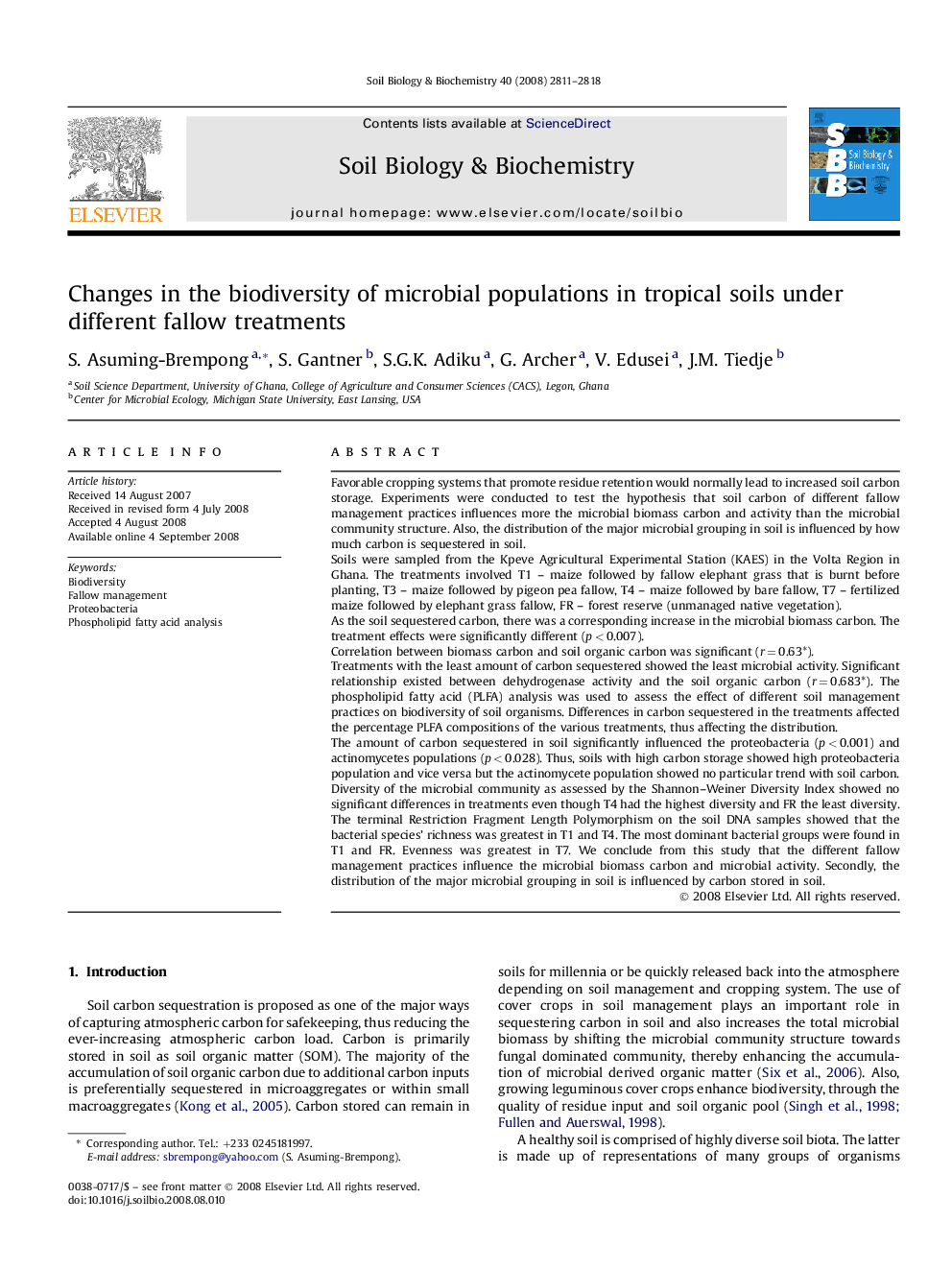| Article ID | Journal | Published Year | Pages | File Type |
|---|---|---|---|---|
| 2026843 | Soil Biology and Biochemistry | 2008 | 8 Pages |
Abstract
The amount of carbon sequestered in soil significantly influenced the proteobacteria (p < 0.001) and actinomycetes populations (p < 0.028). Thus, soils with high carbon storage showed high proteobacteria population and vice versa but the actinomycete population showed no particular trend with soil carbon. Diversity of the microbial community as assessed by the Shannon-Weiner Diversity Index showed no significant differences in treatments even though T4 had the highest diversity and FR the least diversity. The terminal Restriction Fragment Length Polymorphism on the soil DNA samples showed that the bacterial species' richness was greatest in T1 and T4. The most dominant bacterial groups were found in T1 and FR. Evenness was greatest in T7. We conclude from this study that the different fallow management practices influence the microbial biomass carbon and microbial activity. Secondly, the distribution of the major microbial grouping in soil is influenced by carbon stored in soil.
Related Topics
Life Sciences
Agricultural and Biological Sciences
Soil Science
Authors
S. Asuming-Brempong, S. Gantner, S.G.K. Adiku, G. Archer, V. Edusei, J.M. Tiedje,
